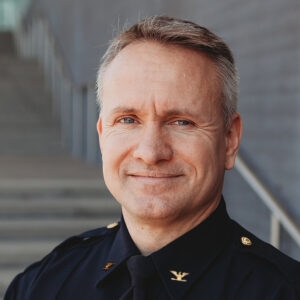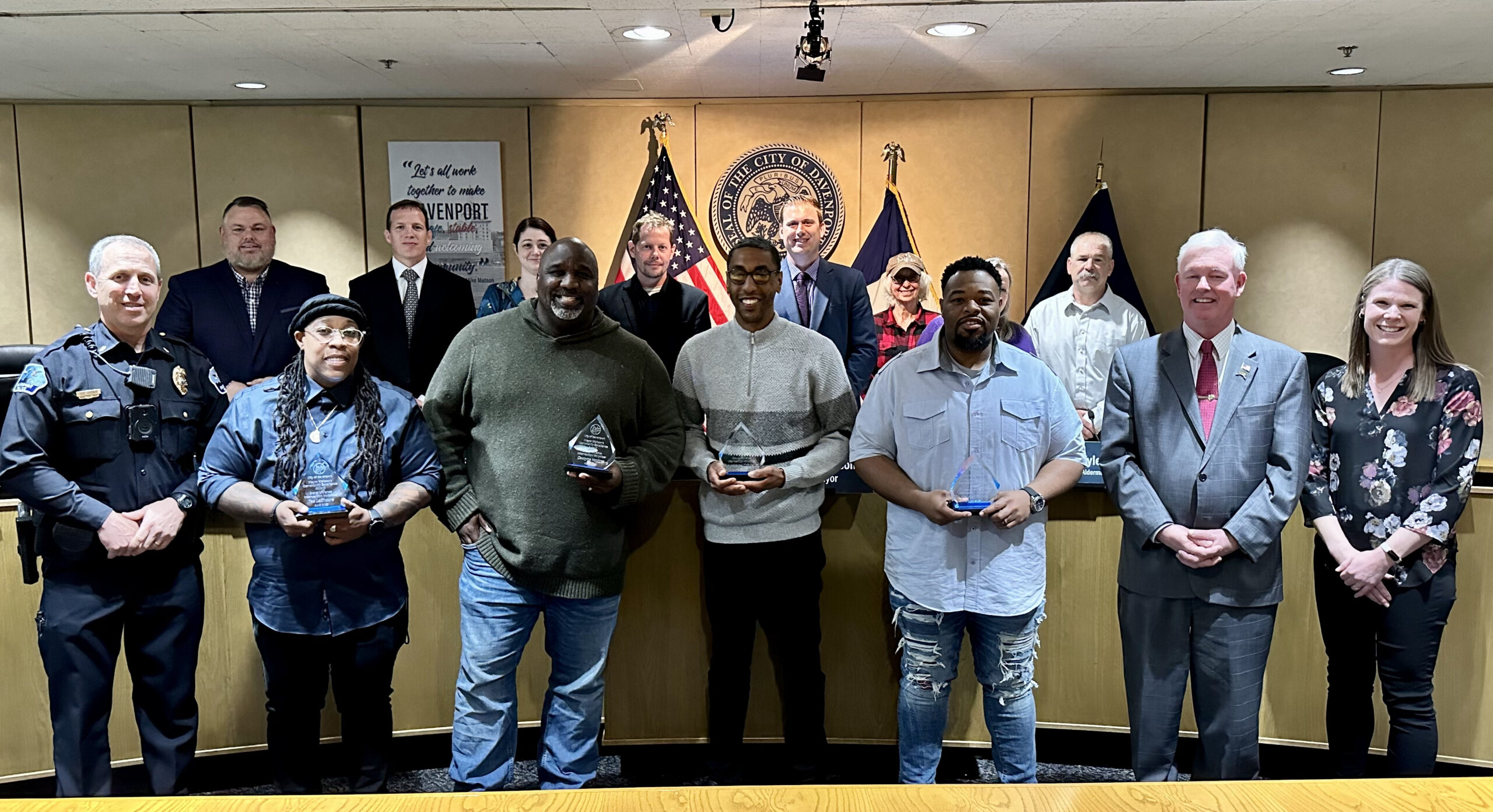Reducing Violent Crime Through Data and Community Partnerships
Davenport Police Department in Iowa strategically fights violent crime.
Violent crime continues to dominate the headlines, but is it trending up or down? In Davenport, Iowa, it's down—and that’s no accident. The Davenport Police Department and its community took a highly strategic approach to address the violence that was weighing heavily on the city.
Davenport is part of the Quad Cities and is home to nearly 102,000 residents. The Davenport Police Department (DPD) is led by Chief Jeff Bladel and is comprised of 167 sworn police officers and 28 professional staff. Like many other agencies across America, DPD is experiencing a hiring challenge and operates at approximately 80% capacity. However, even with this shortage, its efforts to counter violent crime are unwavering and have resulted in dramatic decreases, according to the latest data.
Multiple major incidents in 2019, including two shootings with dozens of rounds of bullets fired and, sadly, two juvenile homicides, ignited the need for community leaders to institute change. As a result, Davenport Mayor Mike Matson created a violent crime task force, including the police department, businesses, and community members, to help understand the community's needs and the problems they were facing.
In 2019, there was a 45% increase in shots fired calls and a 64% increase in non-fatal shootings compared to 2018.
At the same time, DPD began cultivating important partnerships that eventually helped build the overall violence reduction strategy that is in place today. DPD participated in the National Public Safety Partnership (PSP), Smart Policing Initiative (SPI), and National Network for Safe Communities at John Jay College (NNSC). These programs offered DPD the key to determining an effective solution to the city's violence: data.
DPD began by securing resources through SPI to establish a Crime Analysis Unit. In conjunction with NNSC, leadership then examined the department's homicide and non-fatal shooting data and learned that only 0.18% of the community’s population was responsible for 56% of shootings and that most of the incidents were committed by groups of people.
![IMG_1963[36] copy Group Violence Intervention press conference (Dwayne Hodges, community member; Nicole Durbin, President/CEO Family Resources; and DPD Chief Bladel)](https://www.policinginstitute.org/wp-content/uploads/2024/04/IMG_196336-copy-1536x1148.jpeg)
DPD continued by pursuing technical training and assistance programs, including Crime Gun Intelligence Centers (CGIC), and leaned on other departments through peer exchanges to help further inform its strategy.
Through the partnerships, technical assistance, training, and peer exchanges, DPD discovered two critical pieces of the puzzle which ultimately became the two primary components of the city's overall violence reduction approach: Coordinated Assessment Program and Group Violence Intervention.

"We looked across the entire continuum to ensure we were addressing everything …. What are we doing for prevention? How about intervention? And enforcement is a necessary piece. Ultimately, we all have to stay in our lanes and understand our expertise in those lanes. We also have to understand that this problem is not just a police department problem."
Chief Jeff Bladel
The Coordinated Assessment Program (CAP) helped DPD secure a strong foothold in the community's network of people, organizations, and resources. A navigational program that streamlines resources for at-risk youth in the community, CAP served as a single point of access for social services, freeing up DPD’s time and personnel. CAP laid the foundation for DPD’s next approach: the implementation of Group Violence Intervention (GVI).
GVI is a method that leverages a team of community members, law enforcement, and social service providers to deliver anti-violence messaging to high-risk individuals and groups.
![GVI Notification[7] Family Resources partner Tee LeShoure and community member Dwayne Hodges conducting a custom notification in May of 2022.](https://www.policinginstitute.org/wp-content/uploads/2024/04/GVI-Notification7-1024x484.jpg)
The credibility offered by the presence of fellow community members, social service resources, and the authority of the police creates the perfect recipe for reducing violence—and in Davenport, it works. The team identifies individuals at risk for violence or victimization through information from the police department, school district, or other community networks. They then facilitate “custom notifications,” where they deliver an important anti-violence message to the individual: stay safe, alive, and out of prison. During this notification, conversations ensue, trust is built, and resources are offered to help avoid future violent incidents.
Since GVI's implementation in May 2022, 40 community members have been trained to participate in the custom notifications. The GVI team has conducted 136 custom notifications on 107 at-risk adults and 29 at-risk juveniles. These visits have resulted in 77 families getting the help they need to prevent a loved one from making a violent choice.
"We had to routinize this in the organization. When we started this, it came from the top down. The officers thought this was a "soft on crime" approach. The main theme is that this is not a program; it is a strategy. Programs have a beginning and an end; we are making a strategy that extends long beyond me. The strategy is a part of how we operate now and how we address violent crime with our community."
Chief Jeff Bladel
Only 13 of those who have received a custom notification or social service resources have since committed an offense with a firearm, resulting in a 9.5% recidivism rate.
In addition, DPD conducts shooting reviews, an idea that came from a peer exchange with the Milwaukee Police Department. These reviews are held with other Quad Cities law enforcement agencies to share information and assist each jurisdiction in fighting violence with firearms.
Today, Davenport's statistics show dramatic decreases and quantifiable success.
Since Davenport's first major incident in 2019 that prompted movement in violent crime reduction efforts, shots fired calls have dropped 54%, and 27% more firearms were seized (when comparing 2019 to 2023). Of that 27%, approximately 70% of the firearms were used in crimes.
In 2023, Davenport saw a 28% decrease in shots fired incidents from 2022. The number of non-fatal shootings also decreased by 20%, and the number of group, non-fatal, violent incidents dropped by 55%.
Chief Bladel hopes DPD will continue looking holistically at the available data in the future. He also emphasizes the significance of strong community relationships, as many of the problems a community faces aren't always police issues.

"There is no one initiative that is responsible for driving down crime. Everything we are doing is based on crime analysis and community relationships. We have to build relationships with our community and our partners."
Chief Jeff Bladel
Prevention, intervention, and enforcement are the three pillars of Davenport's strategy. The department hopes to use the same model for its next focus on reducing domestic violence offenses.
